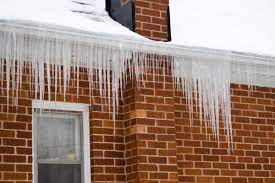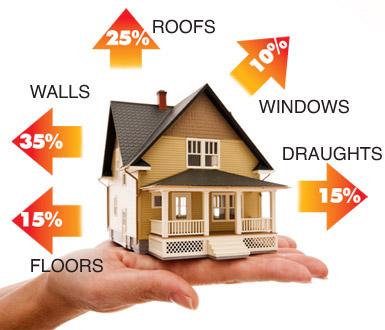5 signs that your home needs better insulation:
- High utility bills
- Your home feels drafty
- Cold floors
- Melted spots on a snowy roof
- Icicles along roofline

A renovation is the perfect time to beef up the insulation in your home. While walls or floors are open and exposed, it may seem strenuous to spend the extra time and money to add insulation but you won’t regret it. Countless times I’ve been showing renovated homes to buyers and the most obvious mistake the homeowner made was not properly insulating before finishing the beautiful space. Now the buyer is thinking “I have to rip all this out or live with a freezing floor, or attic, or bedroom, or kitchen”. If only that added step was taken, the home would be a perfect fit- you can’t hide a cold room with staging!
The benefits of having a properly insulated house include not only a climate controlled environment but also money saved in utility bills and further repair in the future.

With so much energy loss in an home not properly insulated, the results don’t only effect your comfort level and wallet, but also the environment. Wasted energy and greenhouse gas emissions resulting from an uninsulated home contribute to around 930kg of carbon dioxide emissions a year in just 1 semi-detached home (BBC June 2021) https://www.bbc.com/news/uk-wales-57226425.
Three of the most eco-friendly types of insulation are denim and cellulose and spray foam.
Denim
Denim insulation is one of the most environmentally friendly insulation materials available, consisting of 80 percent post-consumer recycled content. It’s made of natural denim and cotton fibers that are recyclable, and it doesn’t use much energy to produce.
Cellulose
Considered one of the most eco-friendly types of insulation on the market, cellulose is made of up to 85 percent recycled content (mostly newspaper) and, like denim, uses a minimal amount of energy to produce.
Spray foam
Spray foam insulation, most commonly made of polyurethane, is applied wet and expands into thick foam that fits snugly in wall cavities, crevices and gaps—therefore, it can be installed in hard-to-reach areas and around piping and wiring. Open-cell and closed-cell spray foam are available.
Spray foam insulation is energy-efficient and effectively helps with air sealing. Spray foam can also help:
- Make your home or building more comfortable year-round
- Reduce noises from outside of your home or building, as well as between different rooms and levels
- Improve the performance of your HVAC systems
- Protect against air and moisture infiltration
- Contribute to a healthier environment
Check out these links for more energy saving tips and government incentives available for those who insulate:
Buying a home you suspect need more insulation? Selling a home and you know it has cold spots?Contact me today with all your buying, selling and renovating questions.